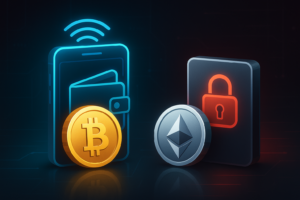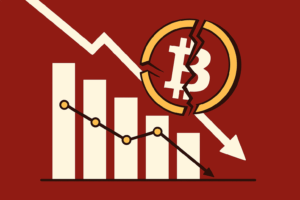Navigating the Crypto Investment Landscape
For investors unfamiliar with digital assets, the crypto market can seem overwhelming. With over 20,000 cryptocurrencies, various blockchain ecosystems, and evolving financial applications, distinguishing between Bitcoin, altcoins, and decentralized finance (DeFi) is essential.
While Bitcoin remains the dominant force in crypto, other assets and financial models are shaping the industry’s future. This blog provides an investor-friendly breakdown of the key categories in crypto and their role in a well-diversified portfolio.
Market Research & Data-Driven Insights
1. Bitcoin: The Digital Gold Standard
Overview: Bitcoin (BTC) is the first and most widely recognized cryptocurrency, often referred to as digital gold due to its store-of-value properties.
- Institutional adoption is rising, with companies like Tesla and MicroStrategy holding Bitcoin on their balance sheets.
- Bitcoin ETFs launched by BlackRock and Fidelity have provided regulated exposure to investors.
- The limited supply of 21 million BTC creates a built-in scarcity mechanism, similar to precious metals.
- Correlation to traditional markets: While historically volatile, Bitcoin has increasingly served as an inflation hedge.
Potential Risks:
- Volatility remains high, making short-term speculation risky.
- Slow transaction speeds compared to newer blockchain networks.
- Regulatory scrutiny continues to evolve in different jurisdictions.
“Bitcoin is becoming a mainstream alternative asset, much like gold.” – J.P. Morgan Institutional Report, 2024
2. Altcoins: High-Risk, High-Reward Innovations
Overview: Altcoins refer to all cryptocurrencies other than Bitcoin, each serving unique purposes. Some of the most notable include:
- Ethereum (ETH): Powers smart contracts and decentralized applications, forming the backbone of DeFi and NFTs.
- Solana (SOL): Known for high-speed transactions and scalability, attracting DeFi and gaming projects.
- XRP (Ripple): Focused on cross-border payments and institutional financial solutions.
- Polkadot (DOT): Enables blockchain interoperability for decentralized ecosystems.
Potential Risks:
- Many altcoins lack long-term sustainability and may not survive market downturns.
- Regulatory risks could impact certain tokens (e.g., SEC lawsuits against XRP and other assets).
- High correlation to Bitcoin price movements means altcoins are also volatile.
“Altcoins are the venture capital side of crypto—high risk, but also high reward.” – Bloomberg Crypto Outlook, 2024
3. DeFi: The Disruptive Force in Financial Markets
Overview: Decentralized Finance (DeFi) refers to blockchain-based financial applications that eliminate intermediaries like banks.
- DeFi platforms now hold over $100 billion in locked assets (Source: DeFi Pulse, 2024).
- Services include lending, borrowing, trading, and yield farming without requiring a traditional bank.
- Ethereum, Solana, and Avalanche are leading platforms powering DeFi applications.
- Stablecoins (e.g., USDC, DAI) facilitate transactions without volatility.
Potential Risks:
- Smart contract vulnerabilities can lead to hacks or protocol failures.
- Regulatory uncertainty—governments are still determining how to oversee DeFi markets.
- High interest rates and rewards can be unsustainable if market conditions shift.
“DeFi represents the most disruptive force in finance since the advent of online banking.” – World Economic Forum, 2024
Real-World Case Studies
Case Study 1: MicroStrategy’s Long-Term Bitcoin Strategy
- MicroStrategy (MSTR) holds over 190,000 BTC, making it the largest corporate holder of Bitcoin.
- CEO Michael Saylor has positioned Bitcoin as a long-term treasury reserve asset.
- The company’s Bitcoin investment has outperformed the NASDAQ and S&P 500 over the last five years.
Case Study 2: Ethereum’s Role in DeFi Growth
- Over 70% of all DeFi applications operate on the Ethereum blockchain.
- Institutional investors are now staking Ethereum to generate passive income.
- Ethereum’s transition to Proof-of-Stake (PoS) has improved its energy efficiency and transaction speeds.
Addressing Pain Points & Misconceptions
Many traditional investors hesitate to explore crypto due to misconceptions:
✅ “Bitcoin is the only valuable crypto.” → While Bitcoin is dominant, Ethereum and other smart contract platforms drive real-world adoption.
✅ “Crypto investing is just speculation.” → DeFi protocols offer real revenue generation and financial utility.
✅ “All cryptos are highly correlated.” → As the market matures, certain assets show lower correlation with Bitcoin.
Providing a Path Forward (Without Selling
For investors exploring digital assets, portfolio diversification within crypto is key:
- Bitcoin as a core allocation – A long-term store of value, akin to gold.
- Ethereum and altcoins for growth exposure – Smart contract ecosystems with real-world applications.
- DeFi for passive income opportunities – Lending, staking, and decentralized trading strategies.
Final Thoughts
Understanding the differences between Bitcoin, altcoins, and DeFi is crucial for crafting a balanced crypto investment strategy. While Bitcoin remains the most established, DeFi and altcoins offer significant innovation and high-growth potential.







